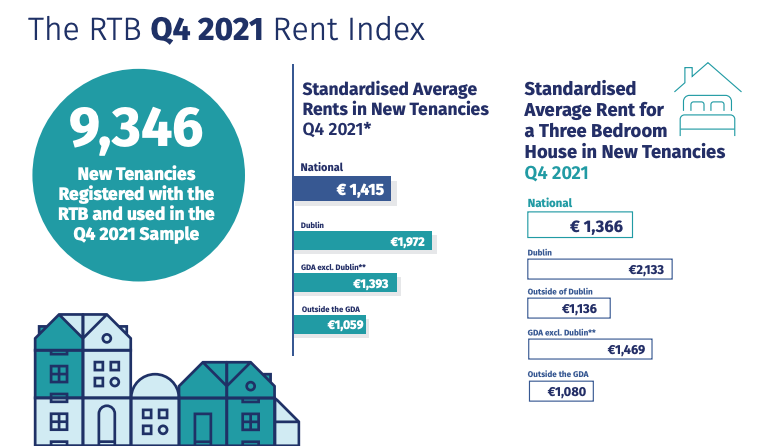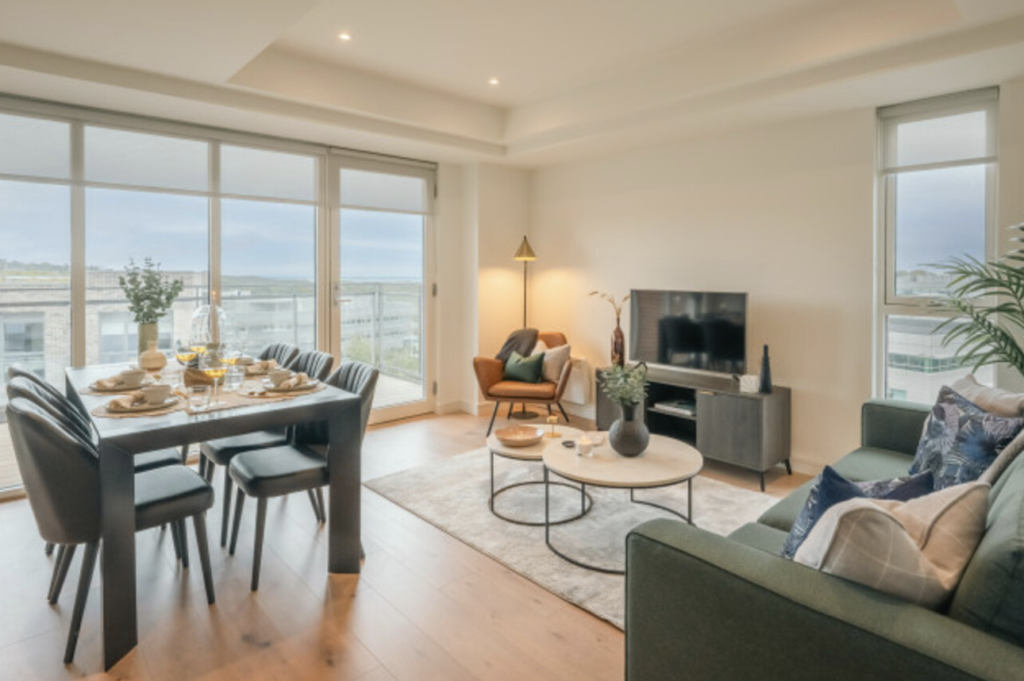New rental tenancies have grown by 9% nationally in the last year.
That's according to the latest figures from the Residential Tenancies Board's (RTB) Rent Index for Q4 2021.
The report found that new rents nationally increased by 9% in Q4 2021, compared to an annual growth rate of 8.8% in Q3 2021.
Nationally, the Index shows that the standardised average rent in new tenancies was €1,415 per month in Q4 2021, which is a decrease of €4 compared to Q3 2021.
The Index analysed 9,346 new tenancy registrations, which is a reduction of 48% on the number of new tenancies included in the Q4 2020 Rent Index.
In Q4 2021, rents for new tenancies in Dublin were €1,972 per month, compared to €1,104 per month outside Dublin (non-Dublin).

Dublin and the Greater Dublin Area (GDA) accounted for over half (55.2%) of all new tenancy agreements registered in Q4 2021 and 59.7% of new tenancies were for apartments.
On a quarter-on-quarter basis, the standardised average rent in new tenancies fell across all regions. In Dublin, on a quarter-on-quarter basis rent levels fell by 0.8%; Outside Dublin (Non-Dublin) they fell by 1.3%; in the Greater Dublin Area (GDA) they fell by 4%; and, Outside the GDA they fell by 1.7%. The RTB said the decline is likely driven by seasonal factors which affect the third quarter comparison period.
The highest standardised average rent in new tenancies for Q4 2021 was in Dublin at €1,972 per month while the lowest monthly rents were in Leitrim, where the standardised average rent in new tenancies stood at €740 per month.
On a quarterly basis, rents in new tenancies fell in 14 counties in Q4 2021. Rents for new tenancies in Roscommon increased the most with a quarterly growth rate of 12.6%. On an annualised basis, in Kildare for Q4 2021 there was no growth (0.0 percent) in the standardised average rent in new tenancies.
Niall Byrne, RTB Director, commenting on the release of the RTB Q4 2021 Rent Index said: “Today's Rent Index reports on rental price changes in new tenancies and shows continued growth in rents being set for this proportion of the overall private rented sector.
"We also note a fall in the number of tenancies registered in the quarter. This is likely driven by factors such as continuing constraints on the supply of rental properties and by current tenants choosing to stay longer in their existing tenancies.”







